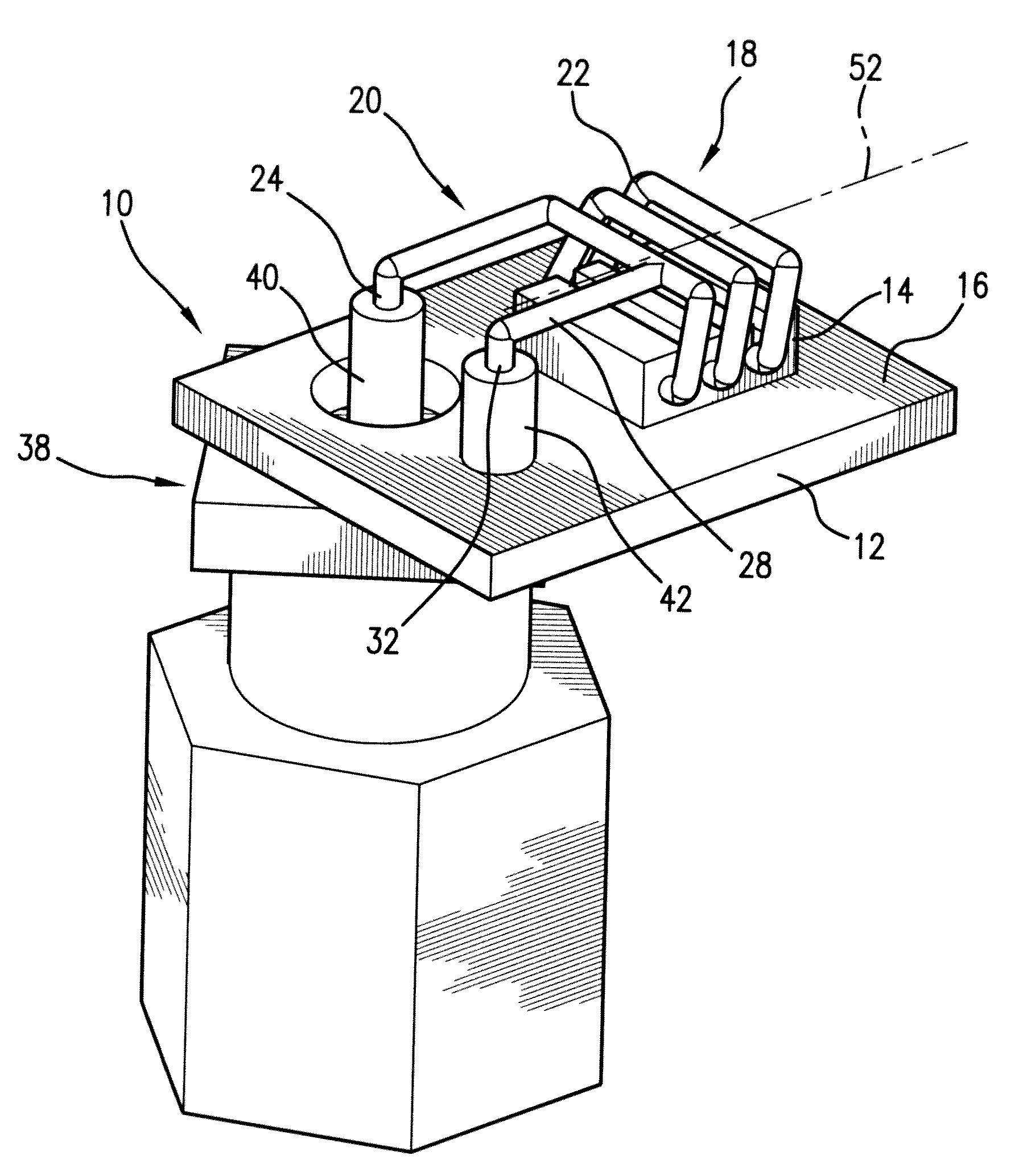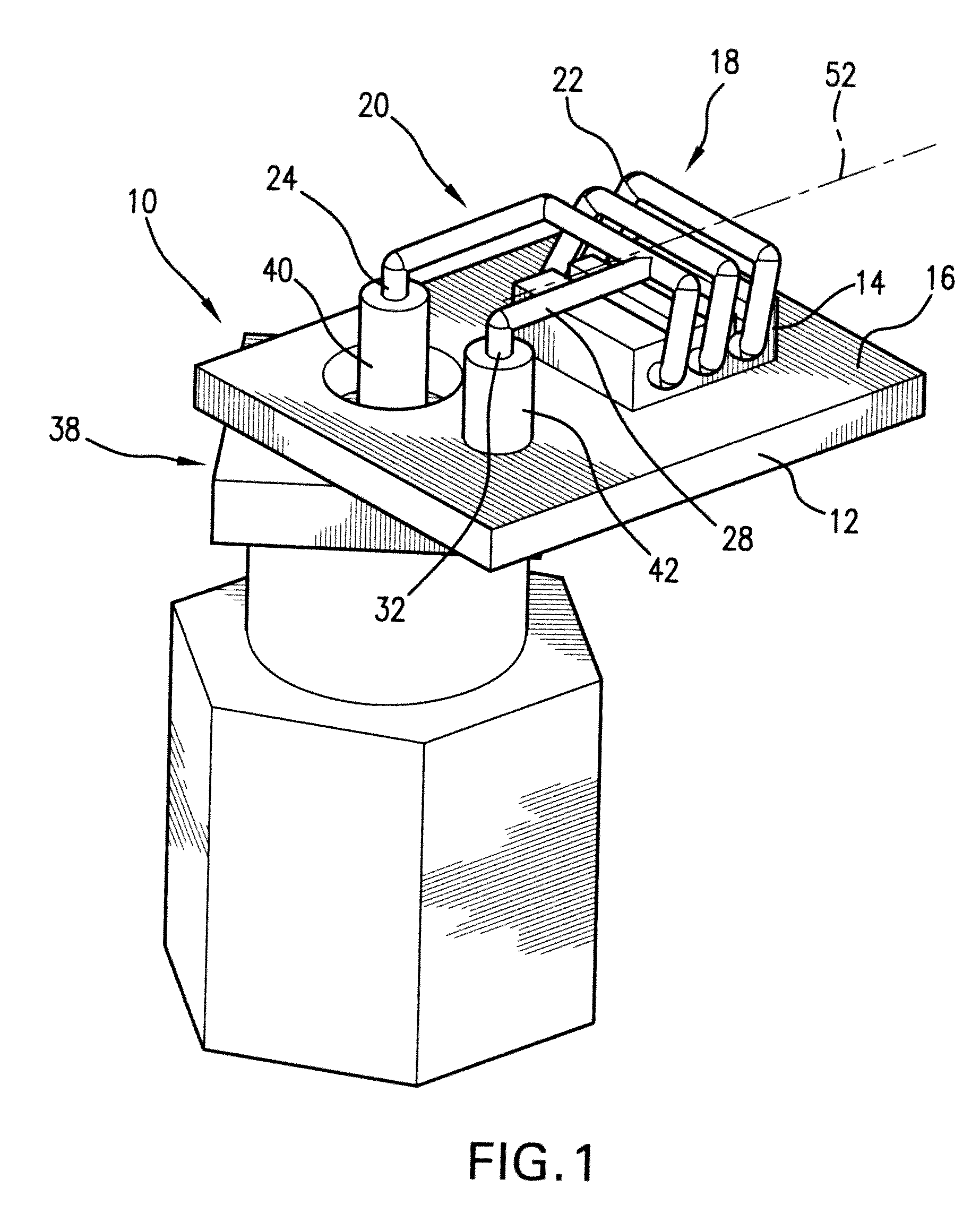F-inverted compact antenna for wireless sensor networks and manufacturing method
a wireless sensor network and compact antenna technology, applied in the direction of helical antennas, non-resonant long antennas, waveguide devices, etc., can solve the problems of power, size, cost and sensing, inability to collect smartdust and reuse, and antennas requiring a large ground plane are not compatible with smartdust and cannot be applied in these areas. achieve maximum efficiency and bandwidth
- Summary
- Abstract
- Description
- Claims
- Application Information
AI Technical Summary
Benefits of technology
Problems solved by technology
Method used
Image
Examples
Embodiment Construction
[0048]Several fundamental limitations of electrically small antennas are taken into consideration and explored to guide the design of the compact antenna 10 of the present invention. First, Radiation Resistance (Rr) is analyzed which decreases by the square of the height of the antenna. For example, the typical Radiation Resistance (Rr) of an antenna with a height of λ / 20 above a ground plane is only a fraction of an Ohm. Without a proper matching network, transferring power into and from a standard 50 Ohm port becomes practically impossible. Given this limitation, maximizing the possible height of the antenna proves to be critical for achieving proper power transfer in small antenna design.
[0049]The small size of an antenna not only limits the Rr, but also increases the capacitive input reactance, and a large inductive tuning reactance L is needed to bring the resonance frequency to the desired value. The quality factor can be expressed as Q=ωL / Rr, where ω is a resonance frequency....
PUM
| Property | Measurement | Unit |
|---|---|---|
| Length | aaaaa | aaaaa |
| Diameter | aaaaa | aaaaa |
| Diameter | aaaaa | aaaaa |
Abstract
Description
Claims
Application Information
 Login to View More
Login to View More - R&D
- Intellectual Property
- Life Sciences
- Materials
- Tech Scout
- Unparalleled Data Quality
- Higher Quality Content
- 60% Fewer Hallucinations
Browse by: Latest US Patents, China's latest patents, Technical Efficacy Thesaurus, Application Domain, Technology Topic, Popular Technical Reports.
© 2025 PatSnap. All rights reserved.Legal|Privacy policy|Modern Slavery Act Transparency Statement|Sitemap|About US| Contact US: help@patsnap.com



